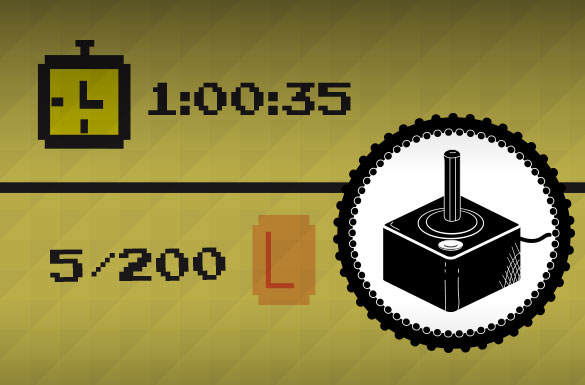When you play Monopoly, what happens when you land on Free Parking? Depending on who you ask, you get a different answer. Some say you get $500. Others say you get a pool of money collected by Income or Luxury Tax. Still others say that nothing happens. Why the disparity in answers? Welcome to the world of “house rules.”
Chances are you’re familiar with house rules. They’re prevalent in a great many card and board games. They add variety, challenge or are used to clarify unclear or ambiguous rules in games. But they’re not necessarily exclusive to just tabletop games.
As far as video games go, you might imagine there wouldn’t be room to change the rules. After all, in a digital game, the rules are part of the programming, each action reduced to a binary yes or no. One of the reasons game testing is such a rigorous job is to keep the rules solid and prevent the game from falling apart. By the end of development, a quality video game will hopefully have all the issues covered, leaving players with a tight experience, but one with little room for improvisation. But players are a creative bunch. By imposing additional criteria for success, there are some options for players to change the video game the way “house rules” do for analog games. As games have grown deeper and more complex, players have found room to improvise WITHIN the structure of the game. Instead of changing the existing framework, players apply self-moderated rules on top of the game’s current architecture, resulting in greater challenges or different objectives altogether.
By imposing additional criteria for success, there are some options for players to change the game the way “house rules” do for analog games.
One of these challenges is seen in completionist behavior. While many action/adventure games provide a variety of collectible items, finishing the main content of a game does not usually require amassing all these items. But there are a number of players who don’t consider a game truly finished until every optional objective is completed and collected. This is also known, by some, as “100%’ing” a game. Many games today will actually implement rewards for people who commit to this massive collecting spree. Some games have even gone as far to build their internal progression systems on it in a sub-genre referred to as “Collect-A-Thon.”
What would normally be accomplished by average players in several hours over several days, speedrunners aim to complete in one sitting.
Another largely popular, self-imposed challenge is found in speedrunning. This, as you could guess, is all about beating the clock. It is almost the opposite of completionist challenges. This challenge eschews optional objectives and instead focuses on completing core tasks required to finish a game’s main campaign in the fastest time possible. The biggest draw in speedruns is being able to surpass seemingly strict time limits. What would normally be accomplished by average players in several hours over several days, speedrunners aim to complete in one sitting.
Participating in marathon sessions, frequently streamed over the internet and often raising funds for charity, speedrunners commit to learning the fastest routes to take, cutting out extraneous items, or playing with extreme precision. Some even go so far as to find glitches in a game’s code to exploit and cut out large pieces of content, thus cutting down on the time it takes to reach the end. (Note: the is often a point of contention over the legitimacy of a speedrun.) There’s a lot of effort that goes into speedrunning, and it can often be very entertaining to watch.
These are some of the best known examples of players creating new and original play styles from existing games. But you don’t have to dive as far in as the super-speedy or super collectors; it can be as easy as limiting yourself to using only one weapon or one character. And while the programming-savvy can code their own modifications to bump up difficulty or change the way they play, anyone can adopt their own personal challenges to liven up their gaming experience. One good place for some really fun examples is No Wrong Way to Play, which documents a variety of different player-imposed challenges.
Is there any way YOU like to play to change up your games? Share them with us!

